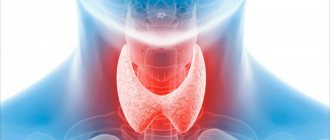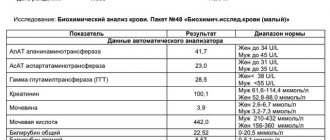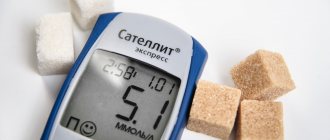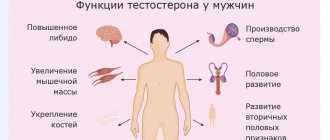In medicine, blood transfusion is called blood transfusion. During this procedure, the patient is injected with blood or its components obtained from a donor or from the patient himself. This method is used today to treat many diseases and to save the lives of people in various pathological conditions.
People tried to transfuse the blood of healthy people to the sick back in ancient times. At that time there were few successful blood transfusions; more often such experiments ended tragically. It was only in the twentieth century, when blood groups (in 1901) and the Rh factor (in 1940) were discovered, that doctors were able to avoid deaths due to incompatibility. Since then, transfusion has not become as dangerous as before. The method of indirect blood transfusion was mastered after they learned how to store the material for future use. For this, sodium citrate was used, which prevented coagulation. This property of sodium citrate was discovered at the beginning of the last century.
Today, transfusiology has become an independent science and medical specialty.
In what cases is blood transfusion performed?
Whole blood cannot be transfused; it is possible to use only its components, such as fresh frozen red blood cells and platelet concentrate. One of the main indications for blood transfusion is a hemoglobin level of less than 70 g/l and a decrease in saturation (oxygen saturation of the blood) to 80%. The procedure is necessary for the disintegration of massive tumors; the disintegration process is accompanied by chronic blood loss. Usually these are tumors of the uterus, vagina, and cervix. And such an oncological problem as melanoma has a depressing effect on the red blood cell, in this case, in order to carry out chemotherapy, it is necessary to restore the normal level of red blood cells and hemoglobin, so a blood transfusion is performed.
The need for a transfusion of fresh frozen plasma is due to profuse edema and the presence of a state of suppressed hematopoiesis; this transfusion is also carried out to prevent the development of disseminated intravascular coagulation syndrome with a sharp inhibition of blood clotting.
Transfusion media
The main blood transfusion media include the following.
Blood preserved
For the preparation, special solutions are used, which includes the preservative itself (for example, sucrose, dextrose, etc.); a stabilizer (usually sodium citrate), which prevents blood clotting and binds calcium ions; antibiotics. The preservative solution is present in the blood in a ratio of 1 to 4. Depending on the type of preservative, the product can be stored for up to 36 days. For different indications, material with different shelf life is used. For example, in case of acute blood loss, medium with short shelf life (3-5 days) is used.
Transfusion media are kept in sealed containers
Fresh citrate
Sodium citrate (6%) is added to it as a stabilizer (ratio with blood 1 to 10). This medium should be used within a few hours of preparation.
Heparinized
It is stored for no more than a day and is used in artificial blood circulation machines. Sodium heparin is used as a stabilizer, dextrose as a preservative.
Blood components
Today, whole blood is practically not used due to possible reactions and complications associated with the numerous antigenic factors that it contains. Component transfusions provide a greater therapeutic effect because they act purposefully. Red blood cells are transfused for bleeding and anemia. Platelets – for thrombocytopenia. Leukocytes – for immunodeficiency, leukopenia. Plasma, protein, albumin - for hemostasis disorders, hypodysproteinemia. An important advantage of transfusion of components is more effective treatment at lower costs. The following blood components are used for blood transfusion:
- erythrocyte suspension - preservative solution with erythrocyte mass (1:1);
- erythrocyte mass - 65% of plasma is removed from whole blood by centrifugation or sedimentation;
- frozen red blood cells obtained by centrifugation and washing of blood with solutions in order to remove plasma proteins, leukocytes, and platelets from it;
- leukocyte mass obtained by centrifugation and sedimentation (represents a medium consisting of white cells in high concentration with an admixture of platelets, erythrocytes and plasma);
- platelet mass obtained by light centrifugation from canned blood, which has been stored for no more than a day, use freshly prepared mass;
- liquid plasma – contains bioactive components and proteins, is obtained by centrifugation and settling, used within 2-3 hours after preparation;
- dry plasma - obtained by vacuum from frozen;
- albumin - obtained by dividing plasma into fractions, released in solutions of different concentrations (5%, 10%, 20%);
- protein - consists of 75% albumin and 25% alpha and beta globulins.
Before the procedure, blood compatibility tests between the donor and recipient are required.
Blood transfusion procedure
Upon admission to the hospital, each patient's blood group according to the ABO system and antigens are checked. If a patient has a negative KO (Kell system), then he is allowed to use only blood with similar characteristics for transfusion. If this rule is not followed, hemolysis will occur and the red blood cells will be destroyed by the patient's own antibodies.
Also, before each blood transfusion procedure, the blood group according to the ABO system and the Rh factor, a compatibility test between the patient and the donor, and a biological test must be carried out (20-25 ml of blood is administered and the patient is monitored for 15 minutes). If the Rh factors, blood group match, the compatibility test is positive and there are no abnormalities in the biological test, further blood transfusion is carried out.
It is possible to individually select various blood components for patients with existing Rh conflict, hemolytic anemia and multiple previous transfusions. For such patients, a gel test is performed in a specially equipped blood bank laboratory.
Where do they get the material?
Preparation, separation into components, preservation and preparation of drugs are carried out in special departments and at blood transfusion stations. There are several sources of blood, including:
- Donor. This is the most important source of biomaterial. Any healthy person can become one on a voluntary basis. Donors undergo mandatory testing, during which they are examined for hepatitis, syphilis, and HIV.
- Waste blood. Most often it is obtained from the placenta, namely, it is collected from women in labor immediately after childbirth and ligation of the umbilical cord. It is collected in separate vessels containing a preservative. Drugs are prepared from it: thrombin, protein, fibrinogen, etc. One placenta can produce about 200 ml.
- Corpse blood. Taken from healthy people who died suddenly as a result of an accident. The cause of death can be electric shock, closed injuries, cerebral hemorrhages, heart attacks, and more. Blood is drawn no later than six hours after death. The blood that flows out on its own is collected in containers, adhering to all the rules of asepsis, and used for the preparation of drugs. This way you can get up to 4 liters. At the stations where the preparation is carried out, it is checked for group, rhesus, and the presence of infections.
- Recipient. This is a very important source. On the eve of the operation, blood is taken from the patient, preserved and transfused. It is allowed to use blood that has spilled into the abdominal or pleural cavity during illness or injury. In this case, you don’t have to check it for compatibility, various reactions and complications occur less often, and transfusion is less dangerous.
What does transfusion help with?
Solid tumors lead to significant changes in the hematopoietic system. Under their influence, anemia and abnormalities in the blood clotting system can develop.
The disintegration of tumors leads to depletion of the bloodstream and blood reserve of the body. Surgical treatment also leads to massive bleeding. All of the above factors lead to the fact that the body’s own reserve is depleted and it requires a blood transfusion from a donor. Due to insufficient blood volume, treatment may be delayed because In case of anemia and thrombocytopenia, chemotherapy cannot be administered.
Chemotherapy drugs can have side effects on blood germs and worsen thrombocytopenia. That is why constant monitoring of red and white blood indicators and coagulation properties is necessary. If any deviations from the norm are noted, blood transfusion is prescribed according to all rules.
What you need to know about blood?
Doctors and scientists often refer to blood as the body's internal environment. It washes all organs. Blood performs many important functions: it carries oxygen, nutrients and hormones, removes waste products of metabolism, provides immune protection, and helps regulate body temperature.
Blood consists of two main parts:
- The liquid part is plasma. It is a solution of salts, ions, proteins and other substances.
- Blood cells. Erythrocytes (red blood cells) contain hemoglobin and transport oxygen. Leukocytes (white blood cells) provide nonspecific and immune protection. Platelets (blood platelets) form a clot when bleeding needs to be stopped. [1,3,4]
Book a consultation 24 hours a day
+7+7+78
How long does the effect last after a blood transfusion?
Everyone knows that blood transfusion is a medical procedure that saves the life of many patients in extreme and difficult situations and prolongs it for cancer patients. But the blood transfusion system is not at all simple. At the first stage, 250-300 ml of red blood cells are administered and the vital signs of the body are monitored. If red blood cells and hemoglobin have returned to normal, the next blood transfusion is carried out no earlier than 18-30 days later, provided that the red blood cell has not recovered during this period of time.
In a situation where, due to the constant destruction of pathological tissues of the neoplasm, daily blood loss occurs, transfusion is performed in the amount of 2-3 doses of red blood cells every 5-7 days. This situation is typical for cervical or vaginal cancer. The procedure will be repeated until conditions are created that are suitable for embolization of the vessels feeding the tumor, or for surgical treatment or chemotherapy.
Types of blood transfusions
There are several methods of blood transfusion:
- indirect;
- direct;
- exchange;
- autohemotransfusion.
Several routes of administration are used:
- into the veins - the most common method;
- into the aorta;
- into an artery;
- into the bone marrow.
The most commonly used method is the indirect method. Whole blood is used extremely rarely today, mainly its components: fresh frozen plasma, erythrocyte suspension, erythrocyte and leukocyte mass, platelet concentrate. In this case, a disposable blood transfusion system is used to administer the biomaterial, to which a container or bottle with a transfusion medium is connected.
Direct transfusion is rarely used - directly from the donor to the patient. This type of blood transfusion has a number of indications, including:
- prolonged bleeding in hemophilia that cannot be treated;
- lack of effect from indirect transfusion in a state of shock of 3 degrees with blood loss of 30-50% of blood;
- disturbances in the hemostatic system.
This procedure is carried out using a device and a syringe. The donor is examined at the transfusion station. Immediately before the procedure, the group and Rh of both participants are determined. Tests for individual compatibility and bioassays are carried out. During direct transfusion, up to 40 syringes (20 ml) are used. Blood transfusion follows the following scheme: a nurse takes blood from a vein from a donor and hands the syringe to the doctor. While he is injecting the material into the patient, the nurse is drawing the next portion and so on. To prevent clotting, the first three syringes are filled with sodium citrate.
Exchange transfusion is used for poisoning, hemolytic disease of the newborn, acute renal failure, and transfusion shock. In this case, blood is partially or completely removed from the patient’s bloodstream and at the same time the same volume is replaced.
During autohemotransfusion, the patient is transfused with his own material, which is taken during the operation immediately before the procedure or in advance. The advantage of this method is the absence of complications during blood transfusion. The main indications for autotransfusion are the inability to select a donor, a rare group, and the risk of severe complications. There are also contraindications - the last stages of malignant pathologies, severe kidney and liver diseases, inflammatory processes.
Are there any alternatives?
Sometimes blood disorders can be corrected with medications. For example, colony-stimulating factors are used to increase the number of white blood cells.
However, in cases where blood transfusion is necessary, there are no alternatives. There are no blood substitutes that can provide similar effects. That is why donation is constantly promoted in all countries of the world, including Russia, and donor days are held periodically. It is important. This helps save the lives of many people. [15]
Price
- Consultation with a transfusiologist - 5100 rub.
- Complete blood count (CITO) - 2400 rub.
- Compatibility test before blood transfusion - 3,200 .
- Erythrocyte suspension, depleted of leukocytes (filtered) - 24,000 rub.
- Transfusion of blood components - 5300 rub.
- The cost of fresh frozen plasma (1 dose 250 ml) is 25,300 rubles.
- Platelet concentrate (1 dose) - 86,100 rub.
In accordance with the legislation of the Russian Federation (Law of the Russian Federation of June 9, 1993 N 5142-I “On the donation of blood and its components”), the procurement of blood, the receipt of blood components and their storage are carried out exclusively by state budgetary institutions. Blood transfusions to our patients are carried out on the basis of licenses for “transfusiology in outpatient and inpatient settings”.
Book a consultation 24 hours a day
+7+7+78
Bibliography:
- G.I. Kozin. Practical transfusiology. Practical medicine, Moscow 2005.
- Igonina M. E. Donate blood to save a life // BMIK. 2013. No. 2.
- O. A. Rukovitsyn. Hematology. National leadership. GEOTAR-Media.
- S. M. Lewis, B. Bain, I. Bates. Practical and laboratory hematology. Moscow, GEOTAR-Media, 2009.
- Seth Lotterman; Sandeep Sharma. Blood Transfusion. Treasure Island (FL): StatPearls Publishing; 2021 Jan-.
- Sandhya Yaddanapudi and LN Yaddanapudi. Indications for blood and blood product transfusion. Indian J Anaesth. 2014 Sep-Oct; 58(5): 538–542. doi: 10.4103/0019-5049.144648.
- Lawrence Tim Goodnough, MD and Anil K. Panigrahi, MD, PhDa. Blood Transfusion Therapy. Med Clin North Am. Mar 2021; 101(2): 431–447. Published online 2021 Dec 24. doi: 10.1016/j.mcna.2016.09.012.
- Giancarlo Liumbruno, Francesco Bennardello, Angela Lattanzio, Pierluigi Piccoli, and Gina Rossetti. Recommendations for the transfusion of red blood cells. Blood Transfus. 2009 Jan; 7(1): 49–64. doi: 10.2450/2008.0020-08.
- Ryan A. Lawless, MD and John B. Holcomb, MD Plasma Transfusion. Trauma Induced Coagulopathy. 2015 Dec 11: 323–337. Published online 2015 Dec 11. doi: 10.1007/978-3-319-28308-1_20.
- Giancarlo Liumbruno, Francesco Bennardello, Angela Lattanzio, Pierluigi Piccoli, Gina Rossetti, and as Italian Society of Transfusion Medicine and Immunohaematology (SIMTI) Working Party. Recommendations for the transfusion of plasma and platelets. Blood Transfus. 2009 Apr; 7(2): 132–150. doi: 10.2450/2009.0005-09.
- Atif I. Khan; FaizAnwer. Platelet Transfusion. Treasure Island (FL): StatPearls Publishing; 2021 Jan-.
- Neil Blumberg, Joanna M Heal and Gordon L Phillips. Platelet transfusions: trigger, dose, benefits, and risks. F1000 Med Rep. 2010; 2: 5. Published online 2010 Jan 27. doi: 10.3410/M2-5.
- B. Nascimento, L. T. Goodnough, and J. H. Levy. Cryoprecipitate therapy. Br J Anaesth. 2014 Dec; 113(6): 922–934. Published online 2014 Jun 27. doi: 10.1093/bja/aeu158.
- Juan Gea-Banacloche, MD. Granulocyte Transfusions: A Concise Review for Practitioners. Cytotherapy. 2021 Nov; 19(11): 1256–1269. Published online 2021 Sep 12. doi: 10.1016/j.jcyt.2017.08.012.
- A. A. Kerimov Blood transfusion: is there an alternative? // Biomedicine (Baku). 2004. No. 3.
- Polunina N.V., Gubanova M.N., Zhiburt Evgeniy Borisovich Risk of infection transmission during blood transfusion // Russian Medical Journal. 2021. No. 6.
Platelet transfusion
Platelets, or blood platelets, take part in the formation of a blood clot and stop bleeding. Their levels may drop due to chemotherapy, radiation therapy, or if the tumor has replaced normal red bone marrow tissue. Platelet transfusions are usually required for cancer patients in one of three cases:
- if the level of platelets in the blood has fallen below a critical value;
- if there is increased bleeding, risk of bleeding;
- if you are undergoing surgery during which significant blood loss is expected. [11,12]









